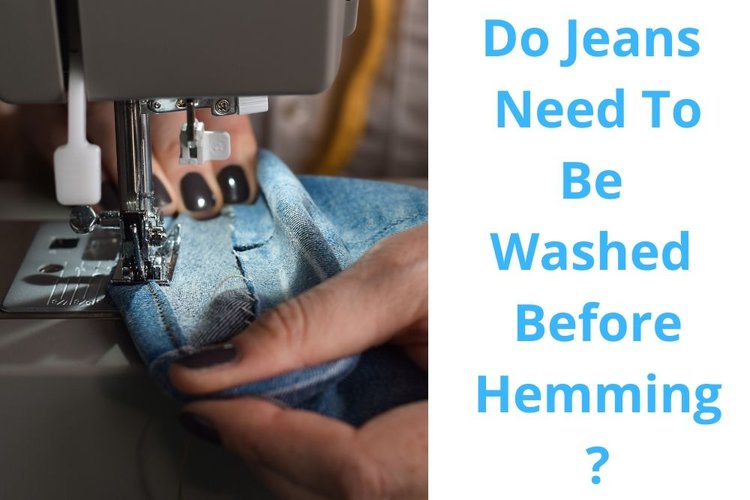Who needs to hem their jeans? I guess this problem often happens to men since they are likely to choose lengthy jeans to wear with cowboy boots or dress shoes on a daily basis. From my previous experience, only women wear ankle jeans.
So, will men tend to hem their jeans more than women do? Not really. Women love floor-height jeans as well, especially long boot-cut jeans or flare jeans.
Sometimes, what we like wholeheartedly may not actually fit us. This is so true about jeans. This is due to the fact that our body shape and size vary hugely. I have extra wide hips and butts reaching approximately 50 inches while my overall height is only 5 feet. (It’s kind of a sad story).
When it comes to picking up the right jeans, I always have to size up my jeans by 2 sizes to fit well with my curves. Yet, the size definitely doesn’t work well for my leg height. That’s why I care so much about hemming the jeans.
It sounds like a simple process, and sometimes it doesn’t get the owner of the jeans involved either (the tailor often gets things done for us). But perhaps an irresponsible tailor won’t tell you to wash the jeans before handing them to be hemmed.
You should always, always, always wash your jeans before hemming them for the reasons listed below.
Quick Navigation
Do Jeans Need To Be Washed Before Hemming?
The majority of us don’t often do hemming right after buying jeans. This almost only happens when we wear jeans a few times and find out that the lengthy jeans that touch the floor are quite annoying.
For many good reasons below, I greatly encourage you to wash your jeans first of all.
Jeans will shrink after washing
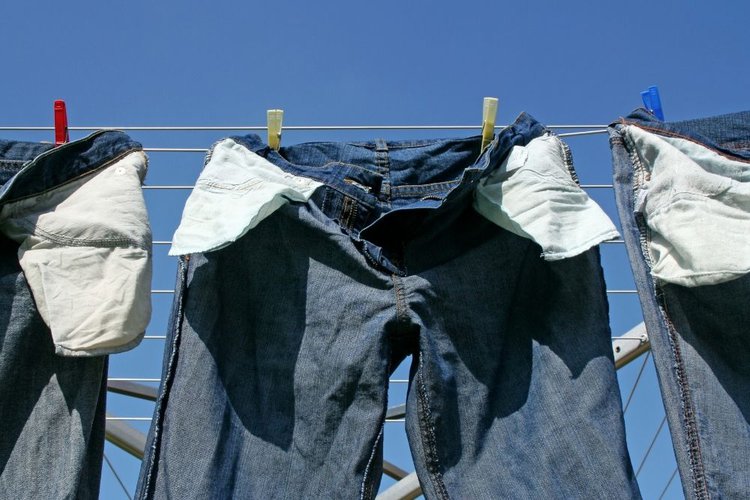
This is the biggest reason why you should decide not to wash jeans before doing hemming. This is because most denim materials today have the property of shrinking after washing. Therefore, if you hem the jeans before washing them, you will probably regret the decision.
I once ran into this issue when I brought the Zara jeans mentioned above to the local tailor. He sort of didn’t care much about whether I had washed it or not.
A few days later, I received the jeans back and realized they fit every corner of my legs perfectly. The true disaster came right after I washed the pants. The hem shrinks to almost 0.5 inches, and now I have no choice but to either wear them under boots or wear them as ankle jeans.
From my experience, I always recommend washing your jeans before doing hemming to estimate the correct amount that you will cut.
In my case, I couldn’t do anything else because the jeans were shorter than I expected. Some of my friends don’t even need to cut the hem of their jeans because the material already shrinks to fit their bodies after washing.
This is due to the fact that most jeans have Spandex or Lycra added to their construction to increase the stretch when worn. These textiles have a high chance of shrinking after washing or after being cut.
So always wash jeans before hemming if you don’t want your pants to turn out to be ankle jeans or even lie above the ankle afterwards.
Clean the dirt and smell out

After a few tries, perhaps your jeans have also left quite a bit of dust and odors from food, cigarettes, or cosmetics.
Even colored liquid stains can dry, harden, and adhere firmly to fabric fibers. This, though, may not have much effect on the stretch or stretch of the jeans’ hem when it comes to hemming. But they really hurt any tailor’s feelings and sensations who accepts altering your jeans.
Whether your lifestyle is sloppy or tidy, washing your jeans before taking them to the tailor won’t make them hate you and your jeans.
Find out if you need to alter anything else
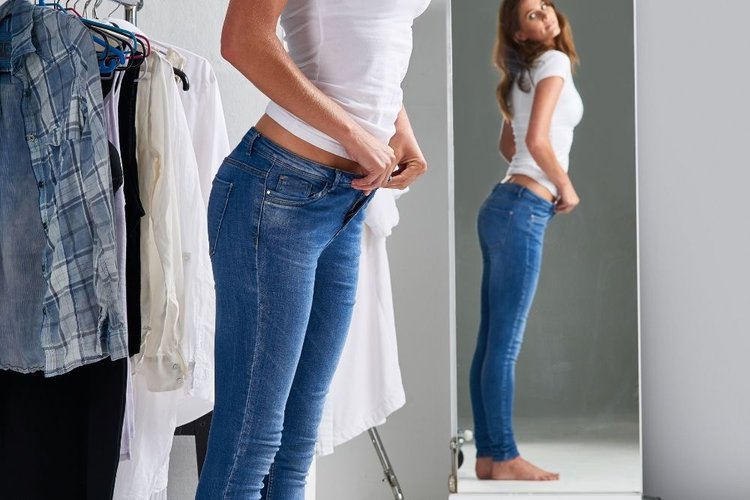
One more important thing about this advice is that you may find out something more to be altered in the construction after washing the jeans.
Some jeans will shrink in length, others may shrink on the sides. But most jeans will stretch in the waistband after each machine wash.
This may let you investigate whether you want to adjust some other details of the pants as well, beyond just the hems, such as widening the legs or solidifying the fly.
You can get the help of the tailor to handle all the items at once, once you find out how the jeans have changed after washing and how they should be altered to fit your shape.
This will save you a lot of time instead of going to the tailor the next few times.
Clear out sort of bad new-jean smells
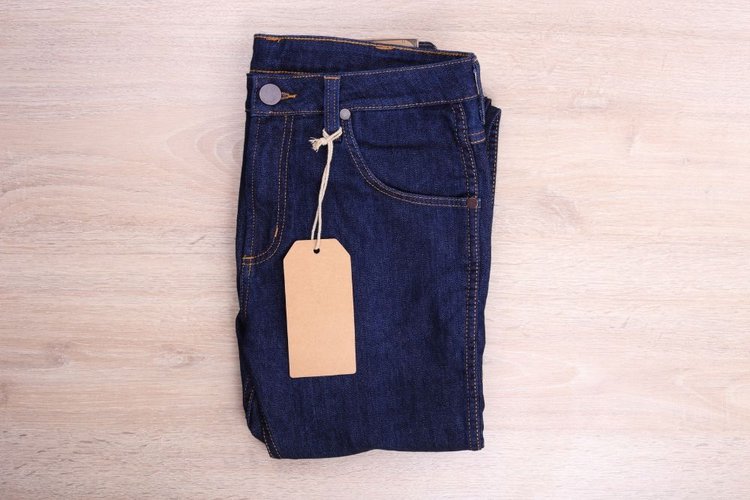
Most new jeans have very bad odors, and these can be harmful to the wearer as well as the person who works with them, the tailor.
This is because formaldehyde and sulfur chemicals are added during fabric treatment to help preserve color and reduce wrinkles during cleaning and cleansing. Jeans will never get rid of these noxious odors completely.
But repeated washing of jeans can reduce these odors significantly. Washing new jeans immediately after purchase will help reduce their negative effects on the tailor.
It seems not to give you any benefit directly, but handing the tailor a clean-smelling pair of jeans is a good way to speak about who you are.
How to wash jeans before hemming?

Washing jeans is not a piece of cake, especially if you have owned a couple of more than 150-dollar brand-new jeans. You will love to wear them for the rest of your life.
The biggest enemy of jeans is hot water, though I have also used it to shrink new jeans a few times. But I don’t quite recommend dipping your jeans in this warmth. Heat is able to distort the structure of the denim fabric and its design as well.
So what’s the right way to go? Here you go:
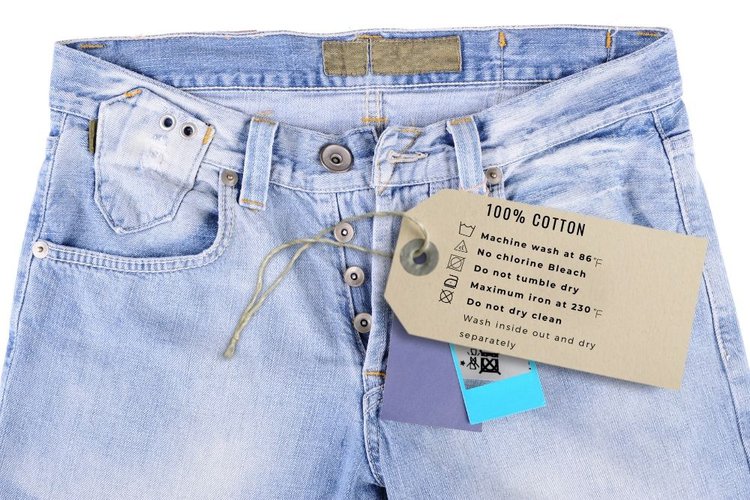
Reading all the information on the tags of jeans is the best way for you to wash them properly. You may see some important instructions like “Cold Washing,” “Hang To Dry,” or “No Bleach.” I am so sorry for your jeans if you put them in the warm washing mode or, worse, the dryer; I bet they will stretch all the way out pretty quickly.
Therefore, the most important thing in this process is to understand how the fabric of your jeans needs to be cleaned properly.
Step 2: Turn the jeans inside out
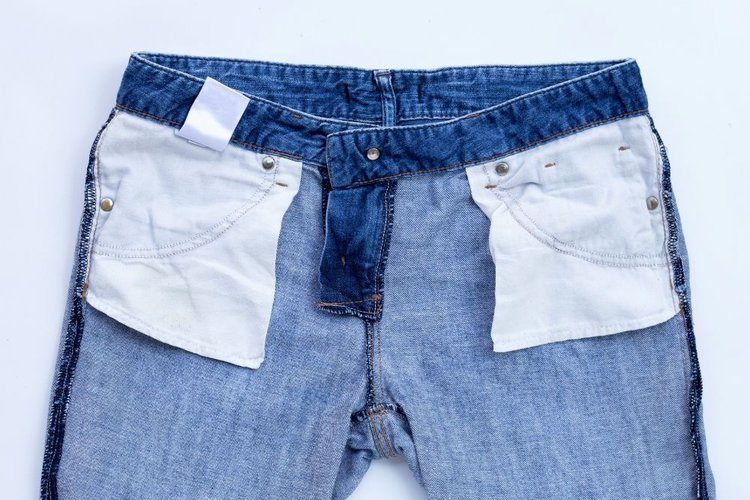
The second most important thing is to turn your jeans inside out instead of throwing them straight into the washing machine or into the basin of water. You can see that jeans are usually dyed only on the outside. This also means that if you expose this surface to water and cleaning chemicals continuously, the material will quickly fade.
Never forget to turn your jeans inside out first whenever you start to wash them.
Step 3: Wash with water
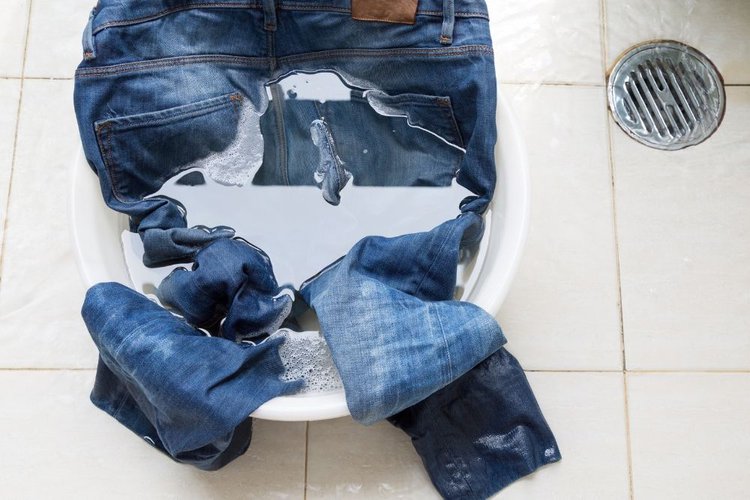
It’s not a wise decision to wash new jeans with either powder laundry detergent or liquid laundry detergent, even if the bad smells from these pants really annoy you.
All you need to prepare is a basin of cold water. Dip your new jeans in the liquid and give them a light rub all over the place.
- If your jeans have stubborn stains that form during wear, you may need the help of white vinegar or lemon juice. These are mild acids, which have good cleaning ability without fading the color of jeans. You can mix 200ml of white vinegar into 1 quart of cold water and soak your jeans in it for 5–10 minutes, depending on how stubborn the stain is. When the pants are wet, quickly use a brush to scrub these stains. You can also crumple the material by hand if this works better for you.
- If the stain expands way too much and too hard, you may need to see a professional to help handle it for you. If they’re lucky, they can come up with specialized chemicals to remove jeans stains without significantly fading the color of the material.
After the cleaning process gets done, you may need to drain the water all the way out manually.
One more important thing to keep in mind is that you should never wash new jeans using the rotation force of any type of washing machine. This may further shrink the fabric.
Instead, hand washing is highly recommended.
Step 4: Air drying
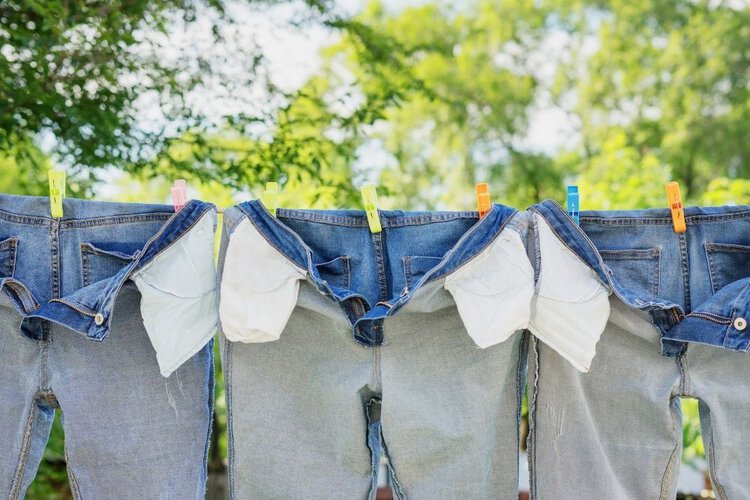
Optimize air drying instead of using either the dryer or washing rotation, which is the most generally recommended way to dry jeans.
This will make sure not to deform the jeans in one way or another. In addition, manually washing and air drying the jeans fabric also facilitates straightening the jeans fabric, reducing wrinkles significantly.
You should not dry jeans directly in the sun because this will make the fabric dry and spongy, reducing the durability of the material over time and usage. You should hang the jeans in a dry and ventilated place. I guess it will take about 2-3 days to dry completely.
Before you leave…
I do not recommend washing your brand new jeans very often. It’s better not to exceed 4 times a month with frequent use. However, washing new jeans before hemming should be a requirement.That way, you can indeed do some math to see how the jeans’ hem should be cut to fit your shape all the best.
Hi, I’m Grace Alision, a fashion lover with a passion for helping women feel confident and beautiful through their style choices. I created this website to share my love for wedding guest dresses and, in the future, to explore concert outfit inspiration. Dresses have always been my favorite way to express elegance and individuality, and I’m here to make finding the perfect outfit fun and easy. When I’m not working on outfit ideas, I love discovering new trends and connecting with others who share my love for fashion.

